As a gardener, it can be alarming to notice that the leaves of your pepper plants are turning yellow. This discoloration can be an indication of a problem with your plant, but it doesn’t always mean that your plant is dying. In this article, I will explain the common causes of Pepper Leaves Turning Yellow, how to identify the problem, and what you can do to prevent and treat it.
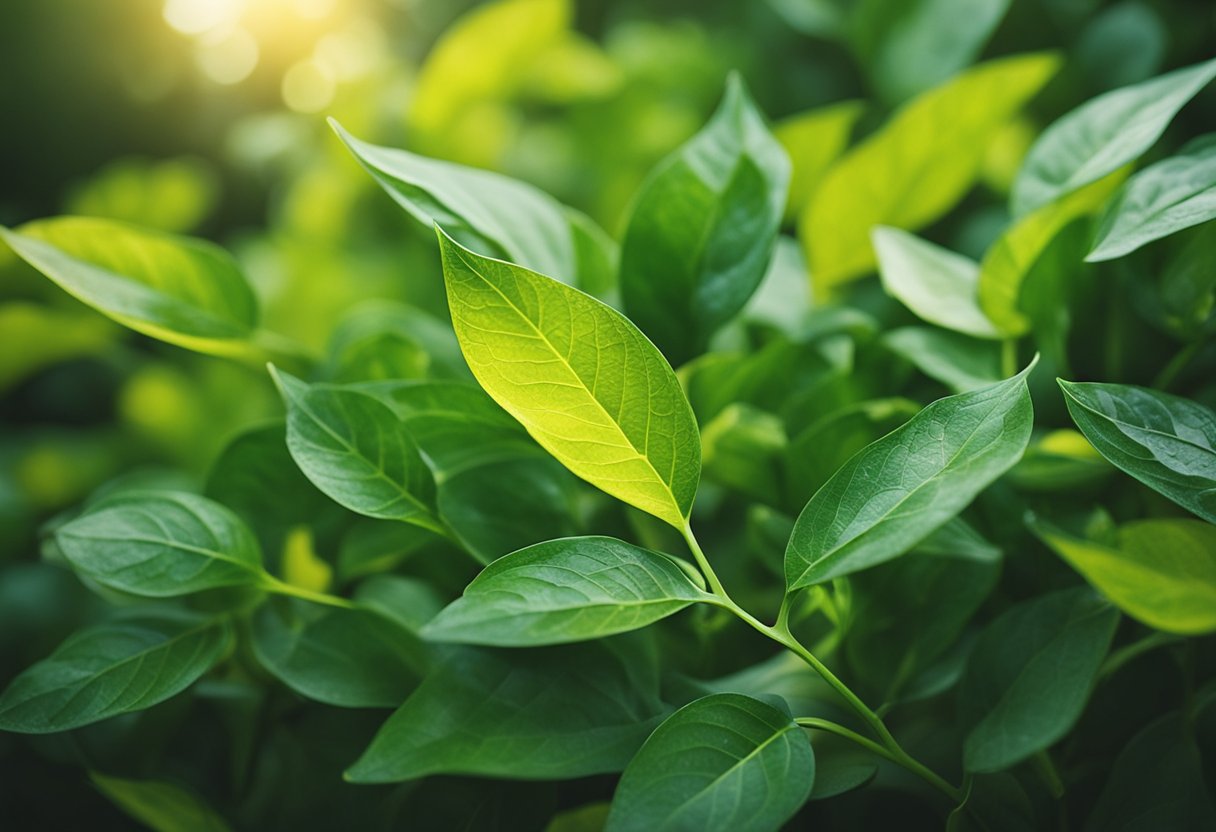
There are several reasons why pepper leaves may turn yellow, including environmental stress factors and cultural practices. Environmental stress factors can include temperature fluctuations, over or under-watering, or a lack of sunlight. Cultural practices such as over-fertilization or planting in nutrient-poor soil can also contribute to yellowing leaves. By understanding the causes of yellowing leaves, you can take the necessary steps to prevent and treat the problem.
Diagnosing the cause of yellowing leaves can be a challenge, but with careful observation and attention to detail, you can identify the root of the issue. Keep in mind that it may take some trial and error to find the best solution for your plant. By following the preventive measures and treatment solutions outlined in this article, you can help your pepper plants thrive and produce a bountiful harvest.
Key Takeaways
- Yellowing pepper leaves can be caused by environmental stress factors and cultural practices.
- Diagnosing the cause of yellowing leaves requires careful observation and attention to detail.
- Preventive measures and treatment solutions can help your pepper plants thrive and produce a bountiful harvest.
Common Causes of Yellowing Pepper Leaves
Pepper plants are a popular vegetable to grow in home gardens, but yellowing leaves can be a frustrating problem for gardeners. Here are some common causes of yellowing pepper leaves:
Nutrient Deficiencies
Pepper plants require a balanced diet of nutrients to grow and produce healthy fruits. A lack of essential nutrients, especially nitrogen, can cause the leaves to turn yellow. To prevent nutrient deficiencies, gardeners should use a balanced fertilizer and make sure the soil has adequate levels of nutrients.
Watering Issues
Watering issues are another common cause of yellowing pepper leaves. Overwatering can lead to root rot and nutrient leaching, which can cause the leaves to turn yellow. On the other hand, underwatering can cause the plant to become stressed and the leaves to wilt and turn yellow. Gardeners should aim to keep the soil consistently moist but not waterlogged.
Pest Infestations
Pests can also cause yellowing leaves on pepper plants. Aphids, spider mites, and whiteflies are common pests that can feed on the leaves and cause them to turn yellow. Gardeners should inspect their plants regularly and use organic pest control methods to prevent infestations.
Diseases
Finally, diseases can also cause yellowing leaves on pepper plants. Bacterial spot, powdery mildew, and verticillium wilt are some common diseases that can cause yellowing leaves. Gardeners should remove infected leaves and use disease-resistant varieties to prevent the spread of diseases.
By understanding the common causes of yellowing pepper leaves, gardeners can take steps to prevent and address the issue to ensure healthy plants and a bountiful harvest.
Environmental Stress Factors
Pepper plants are susceptible to a variety of environmental stress factors that can cause their leaves to turn yellow. These stress factors can be caused by various environmental conditions, including light, temperature, and soil pH imbalances.
Light Conditions
Pepper plants require a minimum of six hours of direct sunlight per day to grow and thrive. If they do not receive enough sunlight, their leaves can turn yellow. This condition is known as chlorosis, and it occurs when the plant is unable to produce sufficient chlorophyll due to a lack of sunlight.
Temperature Stress
Pepper plants prefer warm temperatures between 70-85°F during the day and 60-70°F at night. If the temperature falls below this range, the plant may experience stress, which can cause the leaves to turn yellow. High temperatures can also cause stress, particularly if the plant is not receiving enough water.
Soil pH Imbalance
Pepper plants require a pH range of 6.0-6.8 in the soil to grow and thrive. If the soil pH is too high or too low, the plant may experience stress, which can cause the leaves to turn yellow. A pH imbalance can also affect the plant’s ability to absorb nutrients from the soil, which can lead to nutrient deficiencies and yellowing leaves.
Environmental stress factors can cause pepper plant leaves to turn yellow. It is important to provide the plant with adequate sunlight, maintain the proper temperature range, and ensure the soil pH is within the appropriate range to prevent yellowing leaves.
Cultural Practices
Pepper plants can turn yellow due to various cultural practices that are not suitable for their growth. Here are some cultural practices that can cause pepper leaves to turn yellow:
Improper Fertilization
Excessive use of fertilizers can cause yellowing of pepper leaves. Over-fertilization can cause salt buildup in the soil, which can cause the leaves to turn yellow. It is important to follow the recommended fertilizer application rate and frequency. If you notice yellowing leaves due to excessive fertilization, it is recommended to flush the soil with water to remove the excess salts.
Overcrowding
Overcrowding of pepper plants can cause competition for nutrients, water, and light. This can cause the leaves to turn yellow and the plants to become stunted. It is important to space the pepper plants according to their recommended planting distance to ensure that they have enough space to grow and access the necessary resources.
Poor Soil Quality
Pepper plants require well-draining soil that is rich in organic matter and nutrients. Poor soil quality can cause yellowing of leaves due to nutrient deficiencies. It is important to test the soil before planting and amend it with organic matter and nutrients as needed. Additionally, it is recommended to rotate crops to prevent soil-borne diseases and pests.
By following proper cultural practices, you can prevent yellowing of pepper leaves and ensure healthy growth of your plants.
Diagnosis and Identification
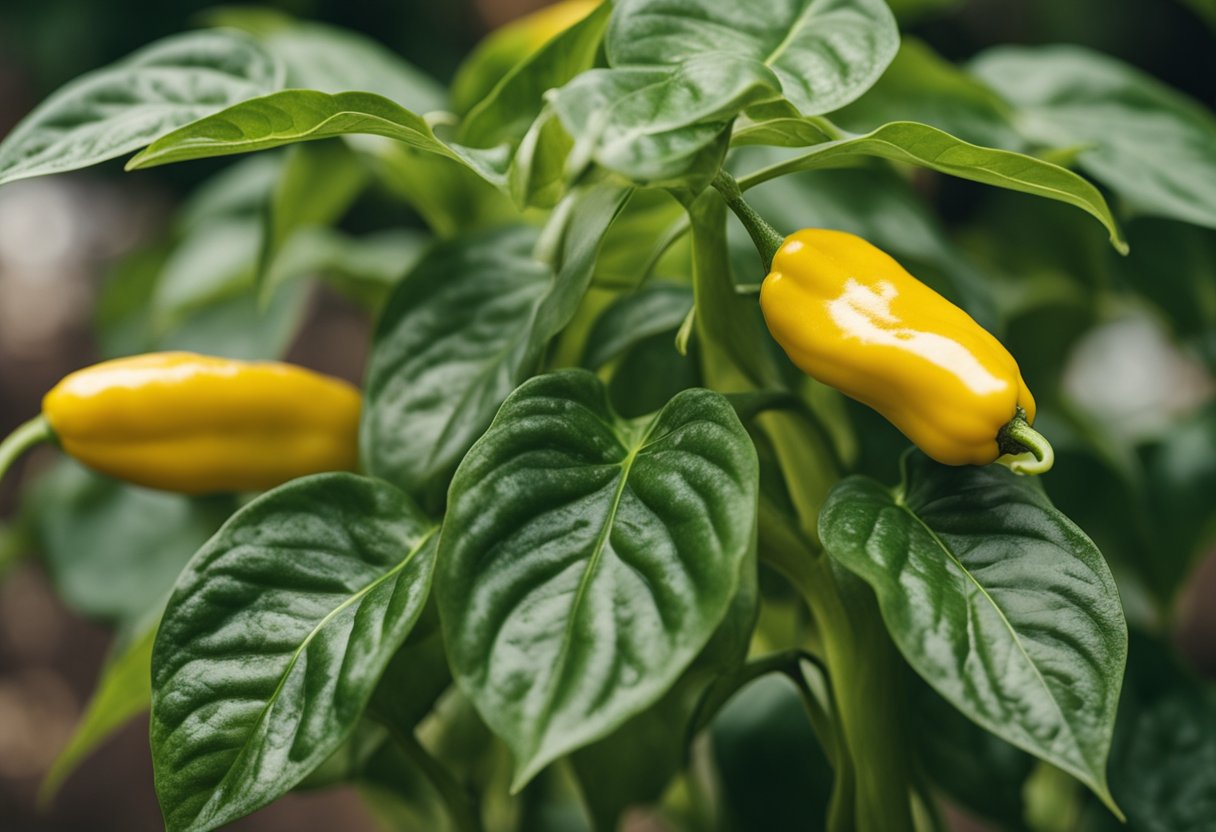
When you notice yellowing leaves on your pepper plants, it is important to diagnose and identify the underlying cause. Here are some methods to help you identify the problem.
Visual Symptoms
One of the easiest ways to diagnose the problem is to look at the visual symptoms. Yellowing leaves can be caused by various factors, including overwatering, underwatering, nutrient deficiencies, pests, and diseases. Look for other symptoms such as brown spots, curling leaves, and stunted growth to help pinpoint the problem.
Soil Testing
Testing the soil can also help identify the cause of yellowing leaves. A soil test can determine if the soil has the right pH level and if the plant is receiving the necessary nutrients. If the soil is too alkaline or acidic, it can affect the plant’s ability to absorb nutrients, resulting in yellowing leaves.
Plant Examination
Examining the plant can also help diagnose the problem. Look for signs of pests such as aphids, spider mites, or whiteflies. Check the roots for signs of rot or damage. If the plant has been overwatered, the roots may be waterlogged and appear brown or black.
By using these methods, you can diagnose and identify the underlying cause of yellowing leaves on your pepper plants. Once you have identified the problem, you can take the necessary steps to correct it and ensure healthy growth for your plants.
Preventive Measures
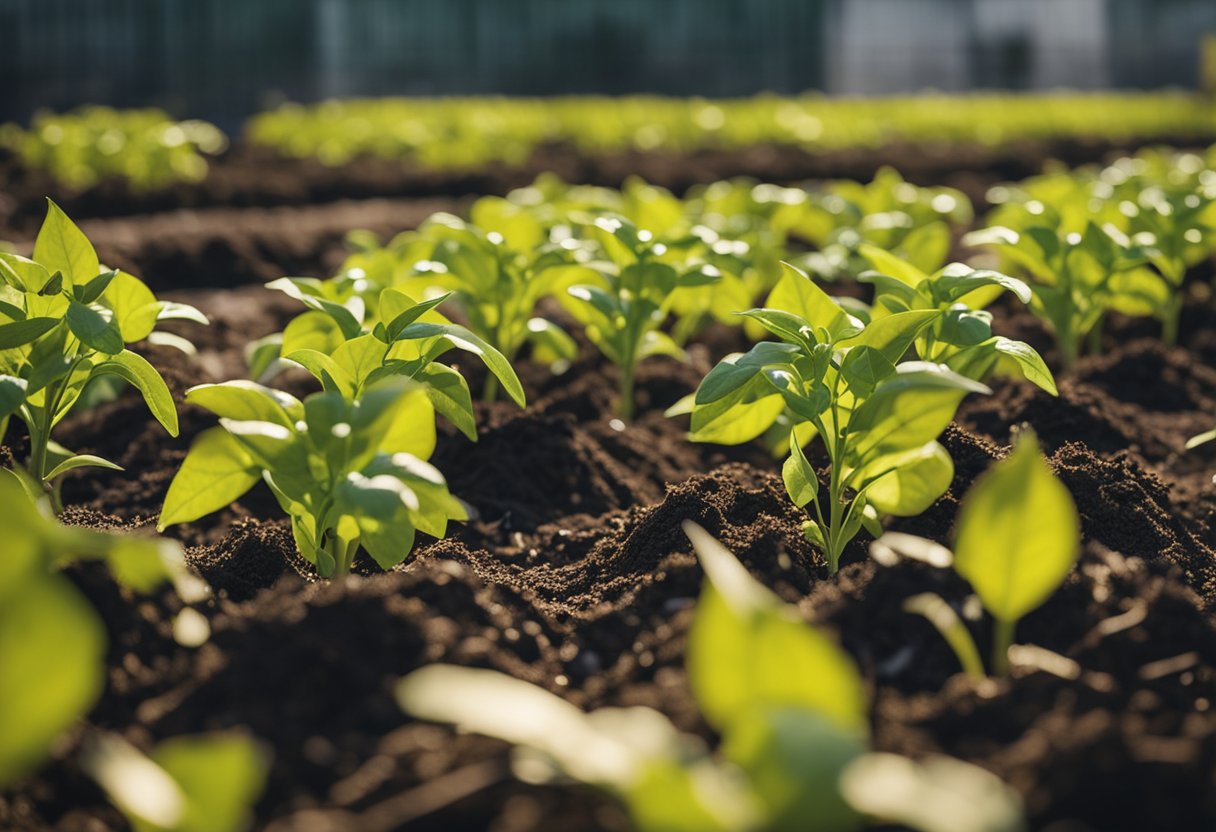
As a pepper plant owner, there are several preventive measures that you can take to ensure that your plant remains healthy and free from yellowing leaves. These measures include regular monitoring, proper watering techniques, and adequate fertilization.
Regular Monitoring
Regular monitoring of your pepper plant is essential to detect any signs of yellowing leaves early. You should inspect your plant regularly to check for any pests or diseases that may be affecting it. You should also keep an eye on the color of the leaves to detect any signs of yellowing.
Proper Watering Techniques
Proper watering techniques are crucial to prevent yellowing leaves in pepper plants. Overwatering can cause the roots to rot, leading to yellowing leaves. On the other hand, underwatering can cause the plant to become dehydrated, leading to yellowing leaves.
To prevent these issues, you should water your pepper plant only when the top inch of the soil is dry. You should also avoid getting water on the leaves as this can cause fungal infections that lead to yellowing leaves.
Adequate Fertilization
Adequate fertilization is essential to prevent nutrient deficiencies that can cause yellowing leaves in pepper plants. You should fertilize your plant regularly using a balanced fertilizer that contains all the necessary nutrients.
You should also ensure that your plant is getting enough sunlight and is planted in well-draining soil. By following these preventive measures, you can ensure that your pepper plant remains healthy and free from yellowing leaves.
Treatment Solutions
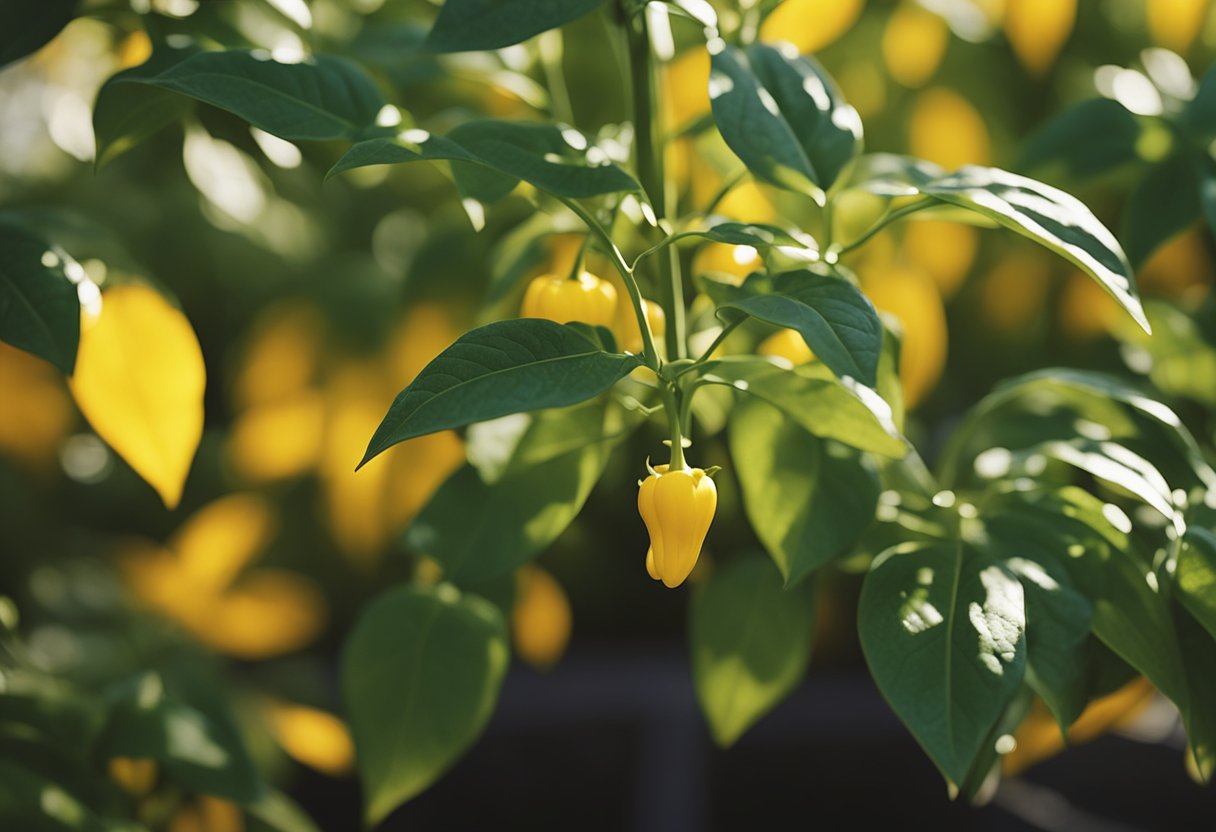
Yellowing pepper leaves can be a frustrating problem for gardeners. Fortunately, there are several treatment solutions that can help to restore the health of your plants.
Adjusting Watering Habits
One of the most common causes of yellowing pepper leaves is overwatering or underwatering. It’s important to ensure that your plants are receiving the right amount of water. A good rule of thumb is to water your plants when the top inch of soil feels dry to the touch.
If you’ve been overwatering your plants, cut back on watering and allow the soil to dry out before watering again. If you’ve been underwatering, increase the frequency of watering and make sure that the soil is moist but not waterlogged.
Pest Control Methods
Pests like mites, aphids, and psyllids can also cause pepper leaves to turn yellow. If you suspect that your plants are being attacked by pests, it’s important to take action quickly. One effective pest control method is to use an insecticide like neem oil.
Neem oil is a natural insecticide that is effective against a wide range of pests. It works by disrupting the feeding and reproductive habits of pests, which helps to control their populations. To use neem oil, mix it with water according to the instructions on the label and spray it onto your plants.
Disease Management
Yellowing pepper leaves can also be a symptom of disease. If you suspect that your plants are suffering from a disease, it’s important to take action quickly to prevent the spread of the disease. One effective disease management method is to remove infected leaves and destroy them.
You can also use a fungicide to control the spread of disease. Copper-based fungicides are effective against a wide range of plant diseases and can be used as a preventative measure or to treat an existing infection.
By adjusting your watering habits, using pest control methods, and managing diseases, you can help to restore the health of your pepper plants and prevent yellowing leaves.
Also Read | Watermelon Plant Growth Stages: Understanding Life Cycle
FAQs – Pepper Leaves Turning Yellow
What causes yellowing of leaves on pepper plants?
Yellowing of leaves on pepper plants can be caused by several factors, including overwatering, underwatering, nutrient deficiencies, diseases, pests, and cold weather. In some cases, the yellowing may be a natural process of the plant shedding old leaves.
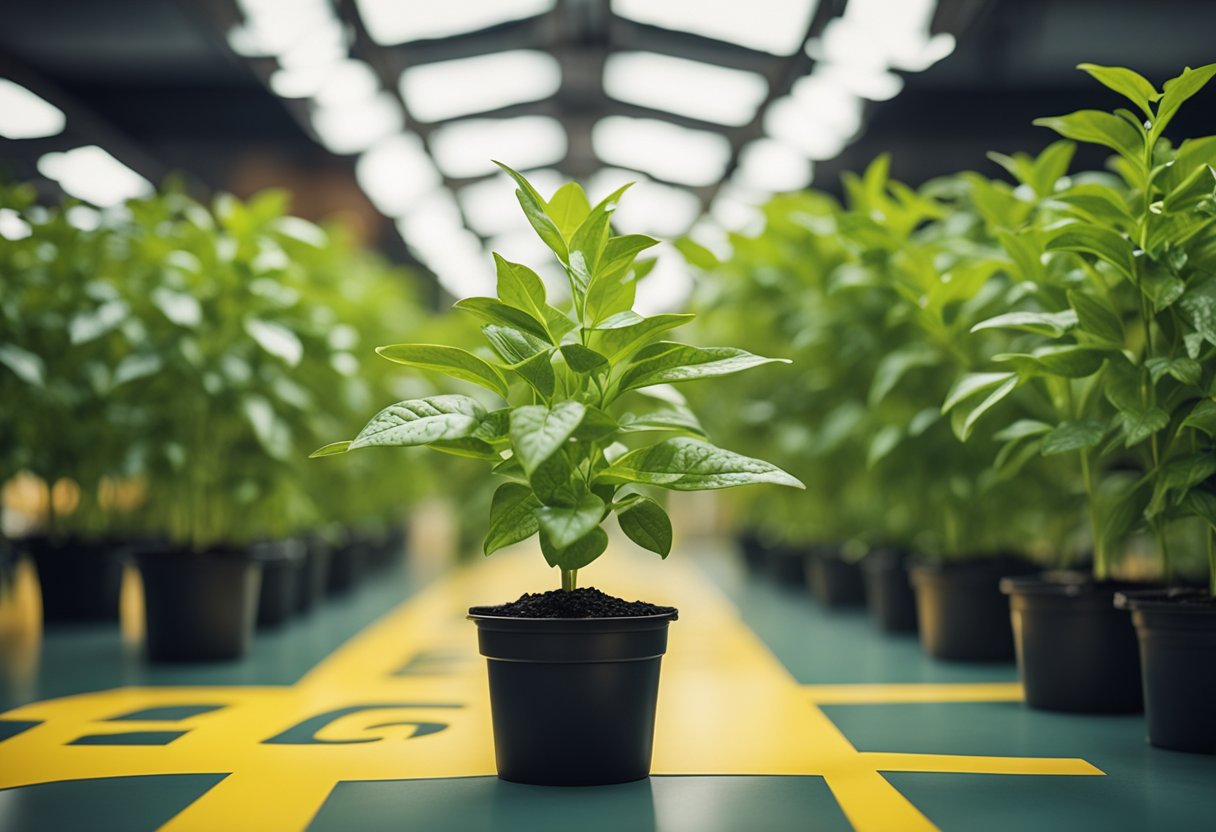
How can one treat yellow leaves on pepper plants?
The treatment for yellow leaves on pepper plants depends on the underlying cause. If the yellowing is due to overwatering, reduce the frequency and amount of watering. If the yellowing is due to nutrient deficiencies, apply a balanced fertilizer or amend the soil with compost. If the yellowing is due to pests or diseases, use appropriate treatments such as insecticides or fungicides.
Are there any signs of overwatering in pepper plants?
Yes, some signs of overwatering in pepper plants include yellowing leaves, wilting, and root rot. Overwatering can also lead to the development of fungal diseases in the soil.
What nutrient deficiencies lead to pepper plant leaves turning yellow?
Pepper plant leaves may turn yellow due to a deficiency in nitrogen, phosphorus, or potassium. Nitrogen deficiency is the most common cause of yellowing leaves on pepper plants.
Is Epsom salt beneficial for treating yellowing pepper leaves?
Epsom salt, which contains magnesium and sulfur, can be beneficial for treating yellowing pepper leaves if the yellowing is due to a magnesium deficiency. However, it is important not to overuse Epsom salt as it can lead to salt buildup in the soil.
What are the best practices to prevent yellow leaves in pepper plants?
The best practices to prevent yellow leaves in pepper plants include providing adequate water and nutrients, maintaining proper soil pH, ensuring good drainage, avoiding over-fertilization, and controlling pests and diseases. It is also important to choose healthy plants and plant them in a suitable location with sufficient sunlight.